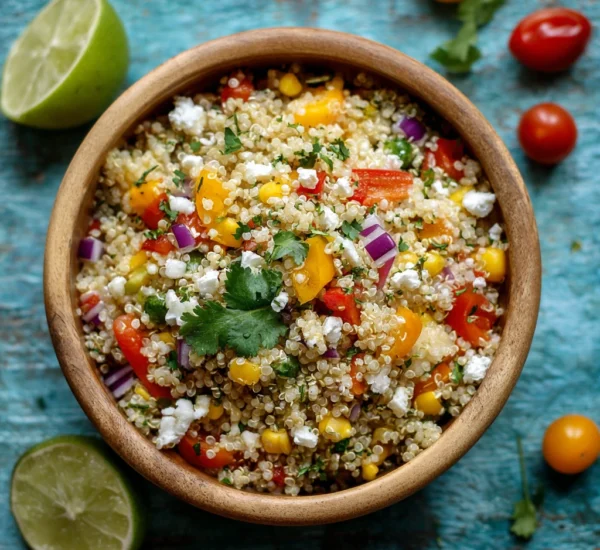Mindful Ways to Enjoy Every Meal: Savoring Life, One Bite at a Time
In our fast-paced world, meals often become rushed, mindless activities. We eat in front of screens, wolf down food on the go, and rarely truly taste what’s on our plates. Mindful eating, however, offers a powerful antidote. It’s about cultivating awareness of the present moment while eating, engaging all your senses, and fostering a deeper connection with your food. This article explores practical ways to bring mindfulness to your mealtimes, transforming them from routine chores into opportunities for nourishment, enjoyment, and overall well-being.

The Essence of Mindful Eating
Mindful eating is more than just paying attention to what you eat; it’s about how you eat. It’s a holistic approach that encompasses the entire eating experience, from selecting your ingredients to savoring the final bite.
Understanding the Core Principles
At its core, mindful eating is about intentionality. It’s a deliberate choice to be present and engaged while eating, free from distractions and judgments. It involves:
- Paying Attention: Noticing the colors, textures, aromas, and tastes of your food.
- Engaging Your Senses: Using all five senses to fully experience the meal.
- Eating Slowly and Deliberately: Taking small bites, chewing thoroughly, and pausing between bites.
- Listening to Your Body: Recognizing hunger and fullness cues.
- Non-Judgment: Accepting your food choices and eating experiences without criticism.
- Gratitude: Appreciating the food, the effort that went into preparing it, and the nourishment it provides.
Benefits Beyond the Plate
The benefits of mindful eating extend far beyond simply enjoying your food more. Studies have shown that it can lead to:
- Improved Digestion: Eating slowly and chewing thoroughly aids digestion, reducing bloating and discomfort.
- Weight Management: Recognizing hunger and fullness cues can help prevent overeating and promote healthy weight management.
- Reduced Stress: Mindful eating can be a calming and grounding practice, reducing stress and anxiety.
- Enhanced Appreciation for Food: By paying attention to the sensory details of your food, you can develop a deeper appreciation for its flavor, texture, and origins.
- Greater Self-Awareness: Mindful eating can increase your awareness of your thoughts, feelings, and physical sensations, promoting greater self-understanding.
Preparing for a Mindful Meal
The journey to mindful eating begins long before you take your first bite. Setting the stage for a mindful meal involves creating a conducive environment and preparing your mind and body.
Creating a Peaceful Eating Environment
Your surroundings can significantly impact your eating experience. A chaotic or distracting environment can lead to rushed and mindless eating. To cultivate a more mindful mealtime:
- Minimize Distractions: Turn off the TV, put away your phone, and silence notifications.
- Create a Relaxing Atmosphere: Dim the lights, light a candle, or play soft music.
- Set the Table: Use pleasant tableware and arrange your food attractively.
- Eat in a Designated Space: Avoid eating at your desk or in front of the TV. Choose a table or comfortable area dedicated to eating.
Cultivating a Mindful Mindset
Before you begin eating, take a few moments to center yourself and cultivate a mindful mindset:
- Take a Few Deep Breaths: This can help calm your nervous system and bring you into the present moment.
- Express Gratitude: Acknowledge the food in front of you and express gratitude for the nourishment it provides.
- Set an Intention: Decide to eat slowly, pay attention to your senses, and listen to your body.
- Leave Your Worries Behind: Consciously release any worries or stressors that might distract you from enjoying your meal.
The Art of Mindful Consumption
Once you’re ready to eat, focus on engaging all your senses and savoring each bite. This involves slowing down, paying attention, and listening to your body.
Engaging All Your Senses
Mindful eating is a multi-sensory experience. Engage all five senses to fully appreciate your food:
- Sight: Notice the colors, shapes, and textures of your food.
- Smell: Inhale the aromas and appreciate the different scents.
- Taste: Take small bites and savor the flavors. Notice the different tastes on your tongue.
- Touch: Pay attention to the texture of the food in your mouth. Is it smooth, crunchy, creamy, or chewy?
- Hearing: Listen to the sounds of your food. The crunch of a cracker, the sizzle of cooking, or the slurp of soup.
Slowing Down and Savoring
Eating slowly is crucial for mindful eating. It allows you to fully appreciate your food and gives your body time to register fullness cues.
- Take Small Bites: This allows you to savor each bite more fully and avoid overeating.
- Chew Thoroughly: Chewing your food thoroughly aids digestion and allows you to extract more flavor.
- Pause Between Bites: Put your fork down between bites and take a few breaths. This allows you to check in with your hunger and fullness cues.
- Avoid Distractions: Focus solely on your food and avoid multitasking.
Listening to Your Body's Wisdom
Mindful eating is about trusting your body’s innate wisdom. Pay attention to your hunger and fullness cues and eat accordingly.
- Eat When You're Hungry: Don't wait until you're ravenous to eat. Eat when you first start to feel hungry.
- Stop When You're Full: Pay attention to your body's signals and stop eating when you're comfortably full, not stuffed.
- Differentiate Between Physical and Emotional Hunger: Learn to distinguish between true hunger and emotional cravings.
Overcoming Challenges and Maintaining Consistency
Mindful eating is a practice, not a perfect skill. There will be times when you slip up or find it difficult to stay present. The key is to be patient with yourself and keep practicing.
Dealing with Distractions and Urges
Distractions and cravings can be significant obstacles to mindful eating. Here are some strategies for overcoming them:
- Acknowledge the Distraction: Notice the distraction without judgment and gently redirect your attention back to your food.
- Identify the Trigger: Try to identify what triggered the distraction or craving.
- Use Mindfulness Techniques: Use deep breathing or body scan meditation to help you stay grounded in the present moment.
- Find Healthy Substitutions: If you're craving something unhealthy, find a healthier alternative.
Incorporating Mindfulness into Daily Life
Mindful eating is most effective when it’s integrated into your daily life.
- Start Small: Begin by practicing mindful eating at one meal a day.
- Be Consistent: Make mindful eating a regular part of your routine.
- Practice Other Mindfulness Techniques: Incorporate other mindfulness practices, such as meditation or yoga, into your daily life.
- Be Patient with Yourself: Mindful eating is a journey, not a destination. Be patient with yourself and celebrate your progress along the way.
Deliciously Mindful Recipes
Mindful eating doesn’t mean sacrificing flavor or enjoyment. Here are a few simple recipes that are perfect for practicing mindful eating. They use fresh, whole ingredients and are designed to be savored.
Roasted Vegetable Medley
This colorful and flavorful dish is packed with nutrients and is perfect for a light lunch or dinner.
Ingredients:
- 1 bell pepper (any color), chopped
- 1 zucchini, chopped
- 1 yellow squash, chopped
- 1 red onion, chopped
- 1 cup cherry tomatoes
- 2 cloves garlic, minced
- 2 tablespoons olive oil
- Salt and pepper to taste
- Fresh herbs (such as rosemary or thyme) for garnish
Instructions:
1. Preheat oven to 400°F (200°C).
2. In a large bowl, toss the vegetables with olive oil, garlic, salt, and pepper.
3. Spread the vegetables in a single layer on a baking sheet.
4. Roast for 20-25 minutes, or until the vegetables are tender and slightly browned.
5. Garnish with fresh herbs and serve warm.
Quinoa Salad with Lemon-Herb Dressing
This refreshing and nutritious salad is perfect for a quick and easy lunch or dinner.
Ingredients:
- 1 cup quinoa, cooked
- 1 cucumber, diced
- 1/2 cup cherry tomatoes, halved
- 1/4 cup red onion, finely chopped
- 1/4 cup fresh parsley, chopped
- 1/4 cup fresh mint, chopped
- Juice of 1 lemon
- 2 tablespoons olive oil
- Salt and pepper to taste
Instructions:
1. In a large bowl, combine the cooked quinoa, cucumber, cherry tomatoes, red onion, parsley, and mint.
2. In a small bowl, whisk together the lemon juice, olive oil, salt, and pepper.
3. Pour the dressing over the salad and toss to combine.
4. Serve chilled or at room temperature.
Simple Avocado Toast
This creamy and satisfying toast is a perfect breakfast or snack.
Ingredients:
- 2 slices whole-wheat toast
- 1 ripe avocado, mashed
- Salt and pepper to taste
- Optional toppings: red pepper flakes, everything bagel seasoning, a drizzle of olive oil
Instructions:
1. Toast the bread to your desired level of crispness.
2. Spread the mashed avocado evenly over the toast.
3. Season with salt and pepper.
4. Add any desired toppings.
5. Enjoy mindfully, savoring each bite.
Frequently Asked Questions About Mindful Eating
Here are some common questions about mindful eating:
- What if I accidentally eat mindlessly? Don't beat yourself up! Simply acknowledge it and gently redirect your attention back to the present moment. Every meal is a new opportunity to practice.
- How do I deal with social situations where mindful eating is difficult? Plan ahead. Consider offering to bring a dish to share, or politely decline certain foods. Focus on connecting with the people around you rather than obsessing over your food choices.
- Can mindful eating help with emotional eating? Yes, mindful eating can help you become more aware of your emotions and triggers, allowing you to make more conscious choices about your eating habits.
- Is mindful eating just for weight loss? No, while mindful eating can aid in weight management, it's primarily about cultivating a healthier relationship with food and enhancing your overall well-being.
- How long does it take to see the benefits of mindful eating? Everyone's experience is different. Some people notice benefits immediately, while others may take longer. The key is to be patient and consistent with your practice.
By incorporating mindful eating into your life, you can transform your relationship with food, enhance your enjoyment of meals, and cultivate a greater sense of well-being. It’s a journey worth taking, one mindful bite at a time.




